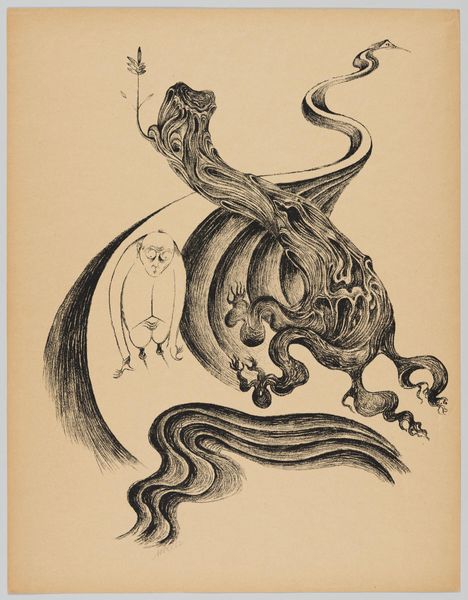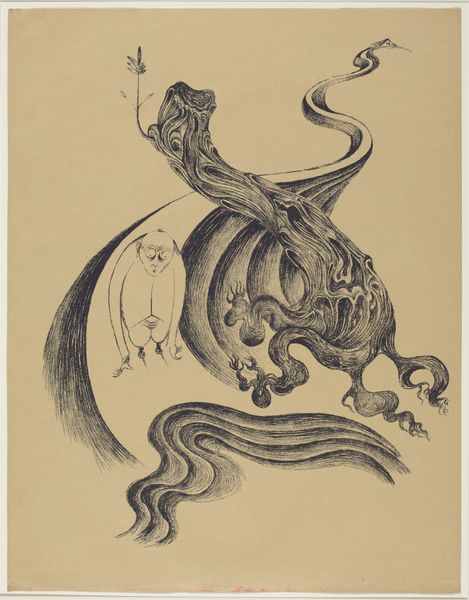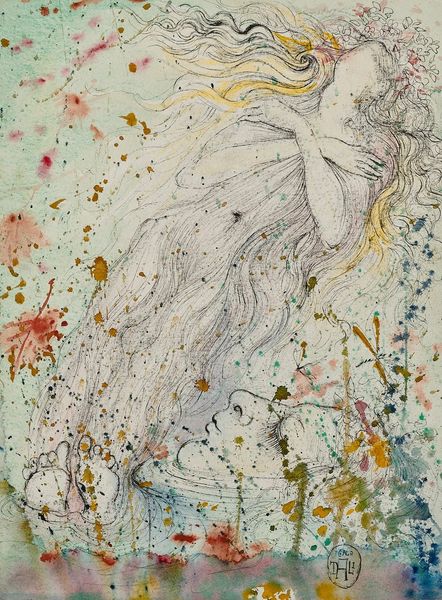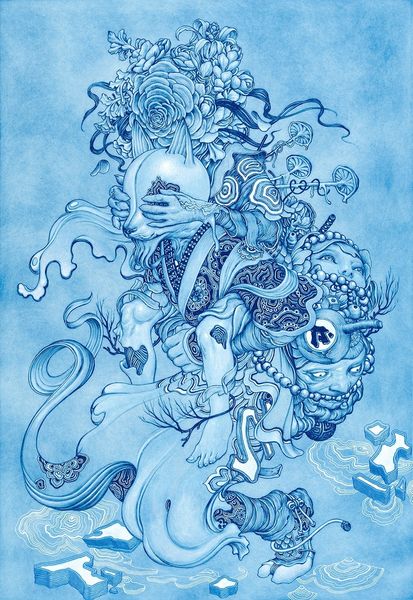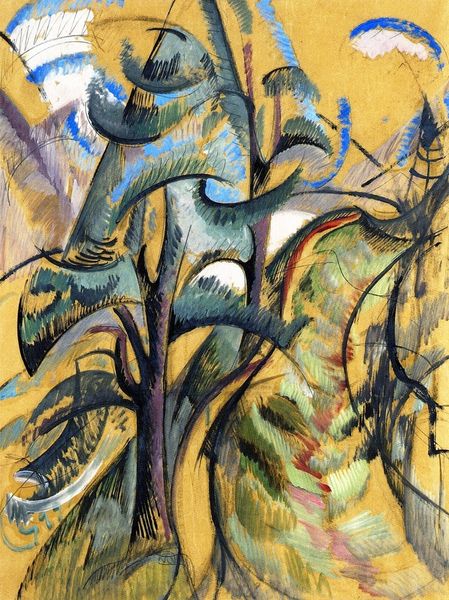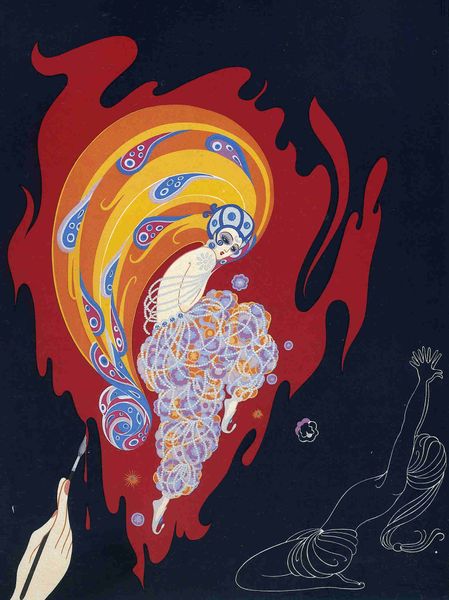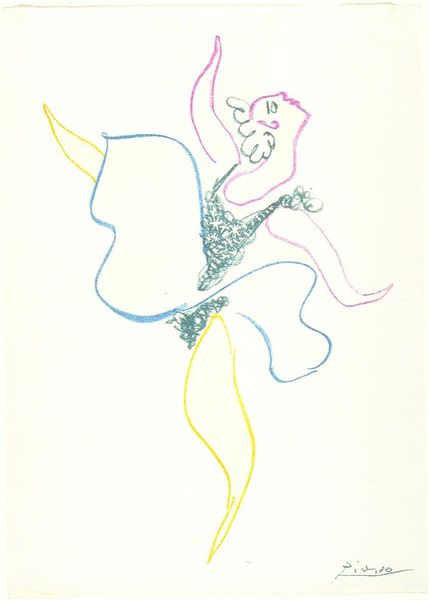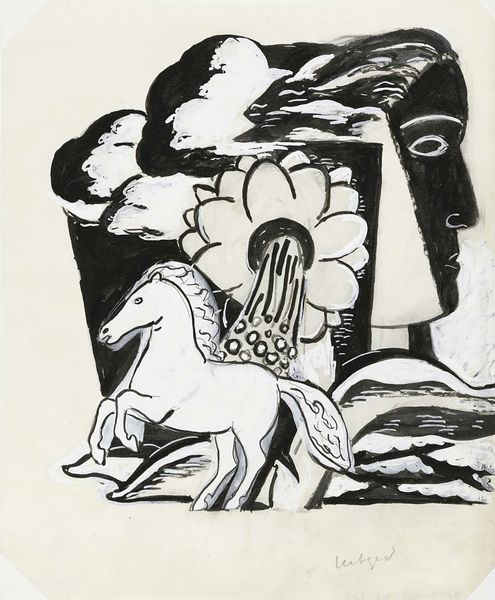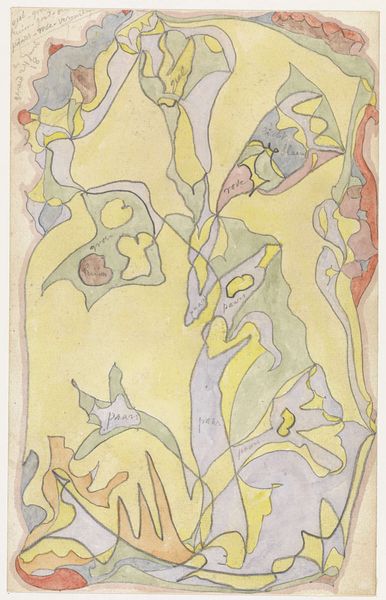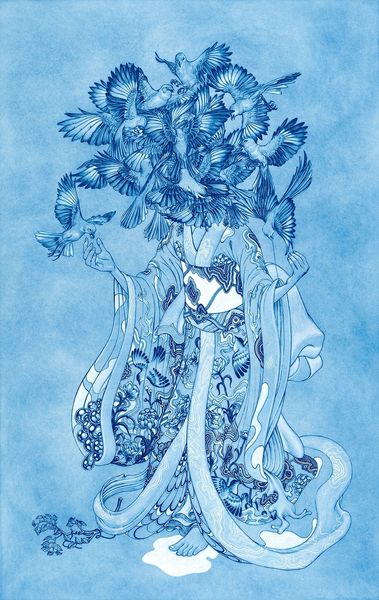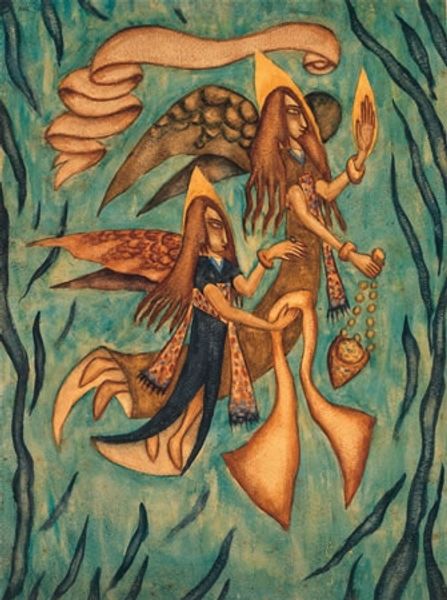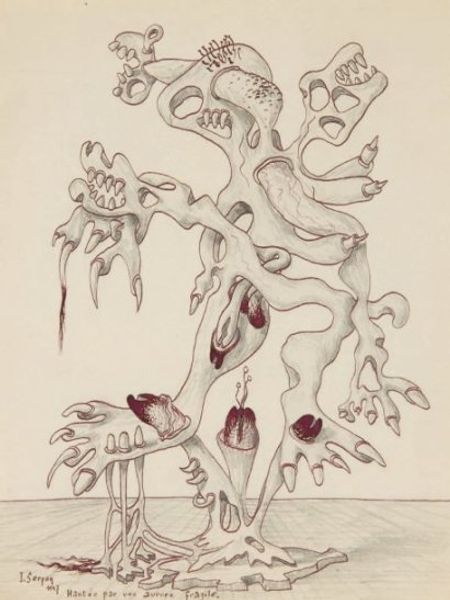
La noblesse du temps, persistance de la mémoire, connu aussi comme ‘Stillness of Time’ 1975
0:00
0:00
painting, watercolor
#
ink painting
#
painting
#
landscape
#
fantasy-art
#
figuration
#
watercolor
#
naive art
#
watercolour illustration
#
surrealism
#
realism
Copyright: Modern Artists: Artvee
Editor: We're looking at Salvador Dalí's "La noblesse du temps, persistance de la mémoire, connu aussi comme ‘Stillness of Time’," created in 1975, using watercolor and ink. The melting clock with a crown is definitely striking! What stands out to you about this piece? Curator: Immediately, I’m drawn to the layering of materials and the commentary it offers on the very concept of "nobility" tied to time. Look at how Dalí contrasts the fluidity of watercolor – embodying the melting clock, the "persistence of memory" itself - with the more structured, almost industrial lines in the cracked blue cube that appears to be painted in ink. Editor: So you're saying the contrast between watercolor and ink highlights the tension between fluid memory and rigid structures? Curator: Precisely. What’s fascinating is how Dalí elevated craft – specifically watercolor painting, often seen as 'lesser' than oil in the fine arts hierarchy – to depict such a potent symbol of surrealist thought. We should also think about consumption. This was a print; an accessible piece of art, made to be consumed, rather than revered from afar. Dalí is, in essence, democratizing "nobility," isn't he? Editor: That's a great point! He's challenging not just our concept of time but also how we value different forms of artistic creation. What about the mass-produced element? Does that factor in too? Curator: Absolutely. Reproducibility connects to the broader material culture of the time. This image would circulate in magazines and galleries. How is the meaning of "time" different if experienced only through reproduced media versus experienced only through lived experiences? Editor: I never considered it that way before, but it makes sense! It changes how you think about the artwork. Curator: Art and labour change over time, much like memory. Thanks for that.
Comments
No comments
Be the first to comment and join the conversation on the ultimate creative platform.
